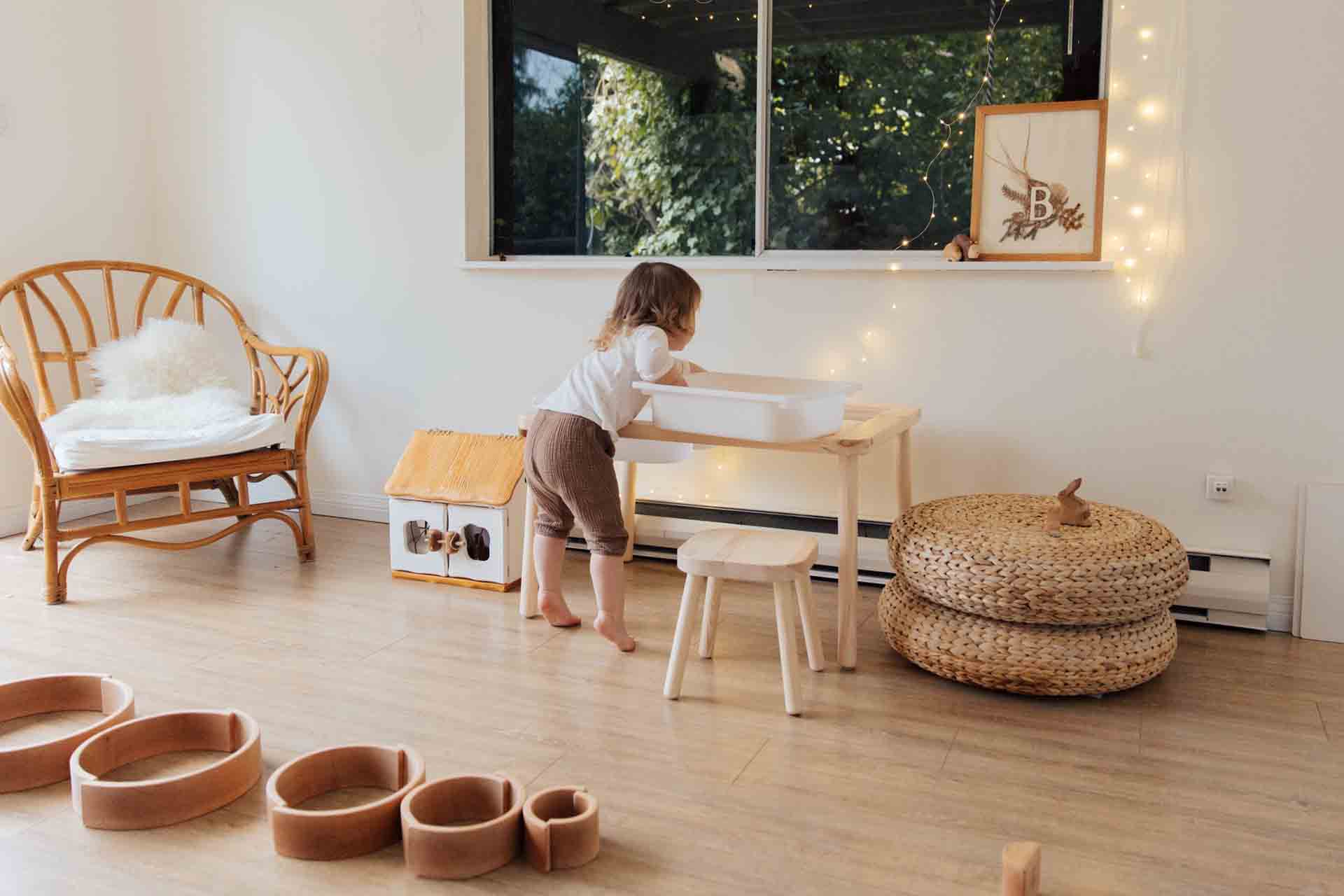Professional labor is generally one of the more expensive aspects of a homeowner’s budget for home improvement projects. While many people prefer to save money by doing their repairs, not everyone possesses the abilities required to restore their homes—even with instructional web videos.
Attempting a DIY project without thorough planning and expertise in the task at hand may result in costs above the cost of a professional. Even if you have prior experience and knowledge, evaluating the time, materials, tools, and permits needed for your maintenance or repair work is critical. Can you complete the project using the tools you have on hand? Will you need to purchase devices such as a cordless drill? So, how do you know what you can fix at home and what you should leave to the professionals? To discover, we called a few experts.
How to Repair a Leaky Kitchen or Bathroom Pipe

A simple DIY remedy for a drain pipe could be tightening a slip nut near the P-Trap. If a hole in the drain pipe causes the leak, a flexible coupling with hose clamps is a simple DIY remedy. If the leak comes from a drain pipe inside the wall, Don Glovan, a franchise consultant with Mr. Rooter Plumbing, recommends consulting a professional.
Wallpaper Hooks
The most challenging aspect of hanging wallpaper is getting it straight on the wall and precisely matching the patterns. A decent laser level can be helpful. It usually takes two people. Sometimes bubbling occurs, requiring the removal of a strip of paper and installing a new strip. This can lead to a need for more wallpaper and the need to order more.
While only you can decide whether the DIY savings exceed the dangers, Tina Nokes, owner of Five Star Painting in Loudoun, Virginia, argues that hiring a professional ensures a smooth and predictable end.
Painting the Outside of Your House

Painting a house’s exterior is a significant job. Most homes require all trim, soffits, rake boards, and all of the siding, depending on the kind of home. This necessitates the extensive use of ladders at high elevations and, sometimes, going onto the roof.
Before embarking on an external project, homeowners should consider the safety standards. Five Star Painting suggests working with a professional with relevant skills and equipment.
Popcorn Ceilings Must Go
Popcorn ceiling removal is becoming more popular, but it could be a better job. First, the popcorn must be doused with a softening agent and softened. The entire surface area must then be scraped using a blade. It is impossible to scrape without leaving divots and holes in the surface. Those divots and holes must be filled with a compound that must dry before sanding smooth.
Finally, everything must be prepped and two coats of paint applied. The work is high up and necessitates the use of ladders. Nokes advises hiring a professional for this task to save yourself the stress and maybe less-than-desired results.
Repairing a Blocked Garbage Disposal
A clogged disposal can be removed by inserting a small specialized wrench into a hexagonal opening on the disposal’s underside while the disposal is turned off. Try this first, and if that doesn’t dislodge the clog, Glovan suggests calling a specialist.
Changing a Faucet

This is advice with a caveat: this is a good DIY project if you have a center set tap. Follow the installation instructions provided by the tap manufacturer. A more complex, widespread form of tap with many hose connections on the underside, on the other hand, should be handled by a specialist, according to Glovan.
How to Repair a Running Toilet
A running toilet can be easily repaired by a do-it-yourselfer with a toilet rebuild kit ($27, homedepot.com). One can be found at any hardware or big-box store. These kits often include simple, easy-to-follow instructions. If you have a one-piece or specialty toilet, these can be difficult to install and may require a professional touch.
Putting up a Light Fixture
Electrical repairs and installs can be costly. Investing a little time in researching and understanding your electrical system can provide you with the skills you need to tackle various electrical projects independently.
Low-voltage projects, such as installing a light fixture, can be safely completed by a homeowner because they are less likely to cause structural or bodily injury. However, if you are still determining your expertise or skill, or if your project involves more than 50 volts, it is preferable to hire a professional, according to Keith Simnacher, owner of Mr. Electric in Austin, Texas.
Ceiling Fan Installation
Installing a ceiling fan is simple, but it may take a few hours, depending on your housekeeping expertise and the fan size. Simnacher recommends hiring a professional if you’re uncomfortable working on a ladder.
Including Chimes in Your Doorbell
If you want to change the sound of your doorbell, consider adding chimes to your existing doorbell system. Simnacher assures us that it is a low-voltage project that does not necessitate the expertise of professionals.
Repairing a plasterboard Hole

Almost any homeowner can repair nail holes. Filling unsightly nail holes is a simple technique to refresh old plasterboard. Fill each void with lightweight putty and scrape the excess off the walls with a spackle knife. Wait for the putty to dry before sanding the area smoothly. Then, using a primer, coat the mended areas.
Cutting, replacing, mudding, taping, and sanding are required for more giant holes in the plasterboard and should be kept for a professional to ensure the seams are undetectable once coated with paint, according to J.B. Sassano, president of Mr. Handyman.
Gutters should be cleaned regularly.
Water can collect around the house, leak into the basement, and seep through the siding, causing severe mold and decay problems, cautions Sassano. Every spring and autumn, gutters should be cleaned of leaves to prevent water damage. Go ahead and tackle the task yourself for single-story homes with level grounding around the foundation and an experienced ladder climber.
We recommend undertaking this activity with someone else to steady the ladder and assist. If you need to move or steadily climb a ladder and clear debris, hire someone.
Tile Re-grouting
This basic household repair can be completed by a homeowner who is familiar with DIY projects. Because tile grout has a porous surface, debris can become trapped in fractured grout. This causes discoloration and more damage.
The first step in repairing grout is to select the appropriate one. Four grout varieties are available: sanded, unsanded, acrylic latex, and epoxy. To choose which grout to use, measure the space between your tiles. Use unsanded, acrylic, or epoxy grout if the spacing between the tiles is smaller than 1/8 inch. Sanded grout should be used if the grout spacing is more extensive than 1/8 inch. Also, before making your final purchase, remember to match the grout color.
The grouted area must then be cleaned. Remove any damaged grout with a grout saw and dampen the joints with a moist rag. Begin grouting the tile after mixing the grout according to the manufacturer’s instructions. To remove extra grout, fully fill all joints and smooth the surface with a damp sponge. Allow the grout to dry completely before cleaning it with a moist rag.
Molding Installation
Only some homeowners have a power saw or the skills to cut and install crown molding while standing on a ladder. The measurements must be precise, and the cuts must be perfectly aligned. Sassano recommends leaving this task to a professional unless you’re a seasoned DIYer.
Changing a Door
While a new door can help brighten a room and save heating and cooling costs, the money saved is best spent on proper installation. According to Sassanoor, any extensive door renovation, such as converting two windows into an opening for gorgeous French or sliding glass doors, should be performed by a specialist.
How to Repair a Sticking Window
A window may stick for a variety of reasons. It could be dirt and debris in the window casing. Problems with your home’s foundation might make windows misaligned and trapped. Sometimes a window is painted and closed before it completely dries, gluing it shut. Doors and windows can expand and become blocked due to high humidity.
Fixing a stuck window frequently entails removing the window and may necessitate using a belt sander or planer. If you’re not an expert at home repairs and need the tools or know-how to handle them safely, leave it to the pros.
Decorating a Bedroom

Painting a room in your home is a relatively simple DIY project, especially if the walls are in decent condition and the ceilings aren’t unusually high. It’s also far less expensive than hiring a professional.
Painting a bedroom is a straightforward six-step process if you are comfortable on a ladder and have the necessary supplies.
Putting Up Floating Shelves
If you’re low on storage space, floating shelves are an efficient (and appealing) solution. They’re also a relatively straightforward DIY woodworking project. Floating shelves can be purchased from any big box or furniture store. You can also personalize them to match your decor and color scheme.
You can install or even create floating shelves if you’re comfortable with a drill. You’ll add a low-cost decorative element to the space and a fantastic location to store your books and plants!
Taking Care of Roof Damage
True, repairing a few broken shingles isn’t a difficult task. Roof work, on the other hand, is sometimes best left to the pros. The apparent safety factor is that you’re working up high and at an angle, so a dangerous fall is always possible.
Second, professional roofers can detect problems that you cannot. Water might have caused damage to the beams beneath if the shingles were missing. And if you don’t fix it properly, you can end up causing more damage.
Landscaping Your Yard

While you will save money on labor, erecting a fence yourself is an enormous task requiring hours of repetitive work. You may also need to check local construction codes and obtain a permit. A fence firm will usually send multiple laborers to do the job fast, and they will also manage the permitting process for you.





